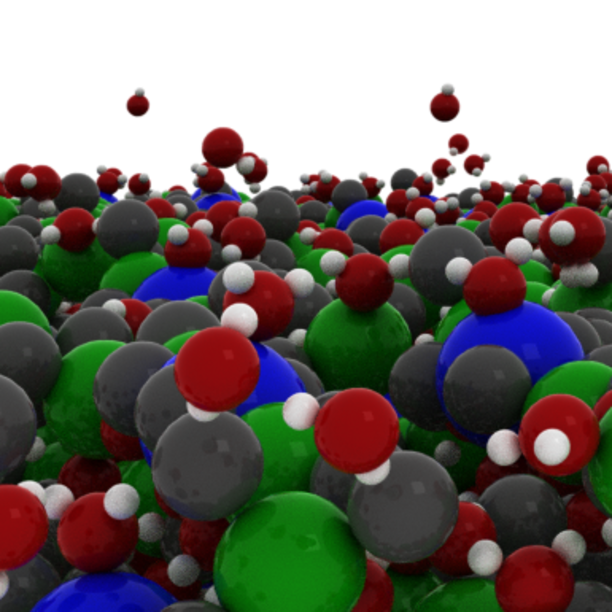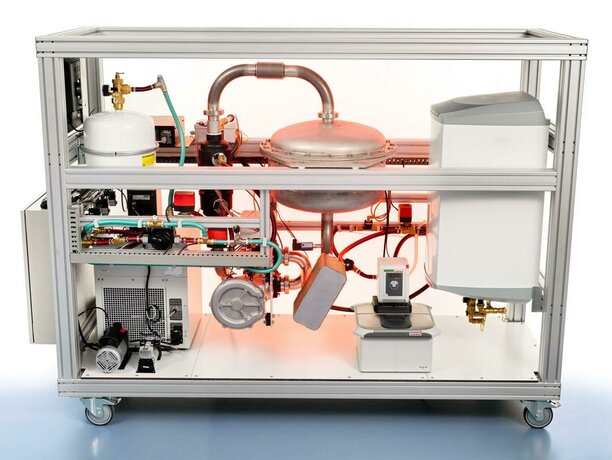Concepts for Heat/Cold Storage
Promising concepts for heat/cold storage are based on thermochemical materials (TCMs) and phase change materials (PCMs).
- TCM-based storage works via reversible binding of molecules in the gas phase with a solid. The gas maybe water, ammonia, methanol, CO2, etc. The solid can be a crystalline material (i.e. a salt) incorporating gas molecules in its crystal lattice but can also be a nanoporous material (i.e. Zeolites or MOF’s) binding gas molecules to their internal surface. Energy is released when the gas binds with the solid. Energy is stored via the reverse reaction. TCM storage has two major advantages. First, TCM’s have high energy density on material level (> 1 GJ/m3). Secondly, the energy is stored loss free as long as the gas and the solid are stored separately. The major challenges for this technology are to improve the power output as solid-state reactions are slow and to guarantee cyclic stability.
- PCM-based storage utilizes melting transitions. Heat is stored during the melting transition and recovered during solidification. PCM materials can be divided into inorganic (i.e. hydrated salt mixtures) or organic materials (i.e. wax, fatty acids, sugar alcohols). PCM storage is of great use for buffering temperatures as large amount of heat or stored/released during the melting/solidification transition. Challenges for this technology are the following. First, the power output has to be increased by heat conductive additives as heat transfer limits the process. Second, density differences between the solid and liquid phases lead to instabilities in the performance.
Principal Scientists
Departments involved/ contributing to EIRES
The following departments are currently actively involved in the focus area on Systems for Sustainable Heat. However, the aim is to involve more departments and research groups in the near future.
- Applied Physics
- Chemical Engineering and Chemistry
- Mechanical Engineering
- Built Environment
Related Research Groups
Here below we acknowledge the TU/e research groups which are already involved in the focus area Systems for Sustainable Heat of EIRES. We welcome all research groups interested in collaborating and contributing to the research focus of EIRES.
Current and planned collaborations
Current projects and collaborations where Principal Investigators (PI) are involved:
- ESA project: ESA, Bari Univ, Chieti Univ, Design of hydrogen storage materials for a ground reservoirs.
- Impulse project: Molecular Dynamics and multiscale simulations of composite and doped materials.
- NWO - Mat4Heat: a collaboration of the TUE and Radboud University on materials for thermochemical materials.
- H2020 projects CREATE and HEAT INSYDE: both projects aim for combining fundamental research on thermochemical energy storage and its demonstration in the built environment.
- The TKI project deal with several aspects of a heat battery, ranging from materials improvement (power & stability) to designing components of an efficient heat battery.
Researchers
We acknowledge the TU/e researchers which are already involved with EIRES, either through the TU/e Sector Plan positions and/or PhD projects. We welcome all researchers interested in collaborating and contributing to the research focus of EIRES.
Interesting reads | listenings
- The salt battery that drags a family through the sunless and windless periods | article | March 25, 2021
- Tackling the energy transition with Lisanne Havinga and Silvia Gaastra-Nedea | podcast | March 12, 2021
- Research Wax+ project on heat storage started
Contact
EIRES | Focus Area: Systems for Sustainable Heat
- Silvia Gaastra-Nedea - s.v.nedea@tue.nl
- Henk Huinink - h.p.huinink@tue.nl
- EIRES office - eires@tue.nl

